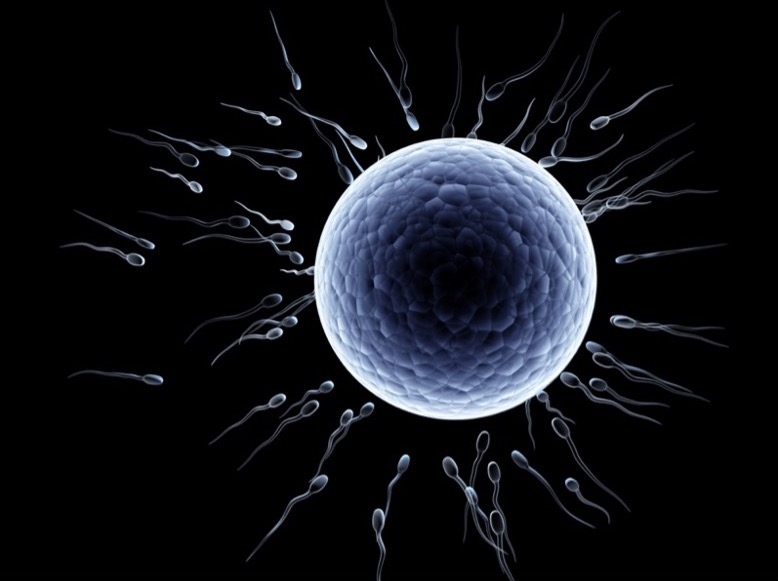Male Fertility: Sperm Lifespan
-
Published:31 March 2025
-
Updated:27 April 2025

I'm sure you've never heard this news before!
SPOILER: The higher the quality of a man's sperm, the longer he lives!
Surprised? Now, get comfortable and read a detailed, scientifically proven long-read about this.
Introduction
Male fertility, or the ability of a man to conceive a new organism, is the focus of modern medicine. Increasing levels of household and industrial pollutants, high levels of stress and physical inactivity contribute to the spread of reproductive system diseases and infertility in married couples.
The epidemic of reproductive system infections, which have a latent and insidious course, also has a significant impact on male fertility. This article explores the relationship between male fertility and the reasons for it, specifically, semen quality measures and longevity based on recent studies.
What is Fertility?
Male fertility depends on the genetically determined or changed qualitative and quantitative structure of seminal fluid during life.
On a global scale, the average life expectancy of men is lower than that of women. Factors contributing to this include men's reluctance to seek medical help and treatment and, in general, a more frequent presence of behavioral factors of an unhealthy lifestyle (smoking, alcohol abuse, aggressive behavior, etc.). These are easily correctable factors that can help increase the duration and quality of life of men. The difference in life expectancy between men and women has a huge impact not only on the family but also on the economy.
A harbinger of potentially serious problems with male reproductive health is the worldwide decline in sperm counts, which is being reported in an increasing number of scientific papers. The similarity of the results between them is strong evidence that sperm counts are indeed changing and are trending negatively. In parallel with this problem, an equally alarming and persistent trend is the increase in the incidence of male reproductive system abnormalities such as cryptorchidism (undescended testicles), germ cell tumors, and delayed puberty.
To understand clearly what fertility is, it is worth remembering the composition of ejaculate or sperm. Seminal fluid consists of a liquid and a cellular part, with the liquid part being formed in the prostate and seminal vesicles and the germ cells (sperm) being formed in the testicles.
The ability to conceive depends on both the quantity and viability of spermatozoa and the composition of the liquid phase, which supports their normal metabolism.
In a broad sense, the answer to the question "What is male fertility" lies in the ability of a sexually mature man to conceive healthy offspring, while in a narrow sense, the above term refers to the quality of seminal fluid.

How is Fertility Assessed in Men and Women?
A couple's fertility depends on several important conditions:
- Production of high-quality eggs in the woman's ovaries and regular ovulation;
- Production of a sufficient quantity of high-quality sperm in the man's testicles;
- The ability of sperm to reach the egg to fertilize it depends on the condition of the male germ cells and the organs of the female reproductive system.
- Successful implantation of the embryo into the wall of the uterus.
A violation at each of these stages leads to problems with fertility, and the reasons are often very difficult to understand. It is necessary to assess the influence of various factors, which requires a comprehensive examination. In some cases, the cause cannot be found. 30% of infertile couples are diagnosed with so-called idiopathic infertility. Doctors cannot say for sure why they cannot conceive a child. But even in such cases, assisted reproductive technologies can help.
Relationship Between Semen Quality and Longevity
According to the latest recommendations of the World Health Organization, the minimum number of spermatozoa in the ejaculate of a healthy man should be 39 million, while the content of viable forms should be at least 58%. A decrease in the overall level of germ cells, as well as the percentage of their motile normal forms, leads to a potential decrease in the chances of fertilizing an egg.
A comprehensive study conducted in Denmark examined semen samples from men who sought fertility treatment between 1965 and 2015. The analysis looked at key sperm characteristics, including volume, sperm concentration, motility and morphology. The results showed a clear correlation between sperm quality and life expectancy.
The study followed 78,284 men over 50 years, with a median age of 23 (range 8-45).
There were 8,600 deaths in the target sample during the period, representing 11% of the total population.
The life expectancy of respondents with a total motile sperm count of more than 120 million was 80.3 years, while the life expectancy of those in the sample with a motile sperm count of 0-5 million was 77.6 years (3.36% less).

Causes of Decreased Fertility in Men
Male infertility can be both an independent disease caused by primary disorders of spermatogenesis (sperm maturation) and a symptom of serious autoimmune or hormonal diseases.
Reproductive function in men and women can deteriorate due to a variety of factors:
- Heredity, various genetic disorders;
- Chronic and previously suffered diseases, and not only those related to the reproductive system;
- Genitourinary infections, sexually transmitted diseases;
- Anatomical abnormalities of the reproductive system;
- Bad habits;
- Lifestyle, nutrition, chronic stress, sedentary lifestyle, excess weight;
- Certain types of treatment, such as chemotherapy and radiation therapy for cancer;
- The impact of various harmful substances and physical factors on the body, particularly those associated with an unfavorable environmental situation and profession.
Age is also one of the most important factors affecting fertility.
Statistics on the Relationship Between Seminal Fluid Quality and Mortality
The study recorded 8,600 deaths among 78,284 men, which was 11% of the total population.
When determining the hazard ratio (HR) for mortality from various causes, patients with a lower spermogram level had significantly higher mortality rates:
- In patients with azoospermia (this is a complete absence of sperm in the semen), the risk of mortality was 1.39 times higher.
- In patients with a total number of motile sperm from 0 to 5 million, the risk was 1.61 times higher.
- In patients with a number of motile sperm from 5 to 10 million, the risk was 1.38 times higher.
It is important to note that the mortality risk consistently decreases with an increase in the number of sperm. That even a small deterioration in sperm quality can have a major impact on the overall well-being and life expectancy of patients. Interestingly, the study also found that men with relatively high sperm counts but low motility or abnormal morphology had a higher mortality rate, in contrast to those who demonstrated high sperm motility and normal sperm structure.
Conclusion
What to avoid? Consumption of fast food, salty and sugary snacks, sugary soft drinks, ready-made confectionery, and processed red meat, while at the same time lacking whole grains, vegetables, fruits, seafood, and nuts in the diet, is associated with deterioration in sperm quality parameters and decreased fertility!
A balanced, nutrient-rich diet will help maintain and improve men's reproductive health and increase the chances of conceiving and having healthy offspring.
The study's findings suggest that people with high sperm counts tend to live longer, while those with low-quality sperm face an increased risk of premature mortality. Given the growing body of evidence that links reproductive health to overall well-being, it is crucial to realize that semen quality is not just a measure of fertility, but a possible indicator of longevity and health status.
Semen quality and lifespan: a study of 78 284 men followed for up to 50 years (https://academic.oup.com/humrep/advance-article/doi/10.1093/humrep/deaf023/8051460), L Priskorn, R Lindahl-Jacobsen, T K Jensen, S A Holmboe, L S Hansen, M Kriegbaum, B S Lind, V Siersma, C L Andersen, N Jørgensen. Published: 05 March 2025. Accessed 31 Mar 2025.
New insights to guide patient care: the bidirectional relationship between male infertility and male health (https://pubmed.ncbi.nlm.nih.gov/32089256/), Fertil Steril. 2020 Mar;113(3):469-477. doi: 10.1016/j.fertnstert.2020.01.002. Epub 2020 Feb 20. Accessed 31 Mar 2025







.svg)
.svg)
